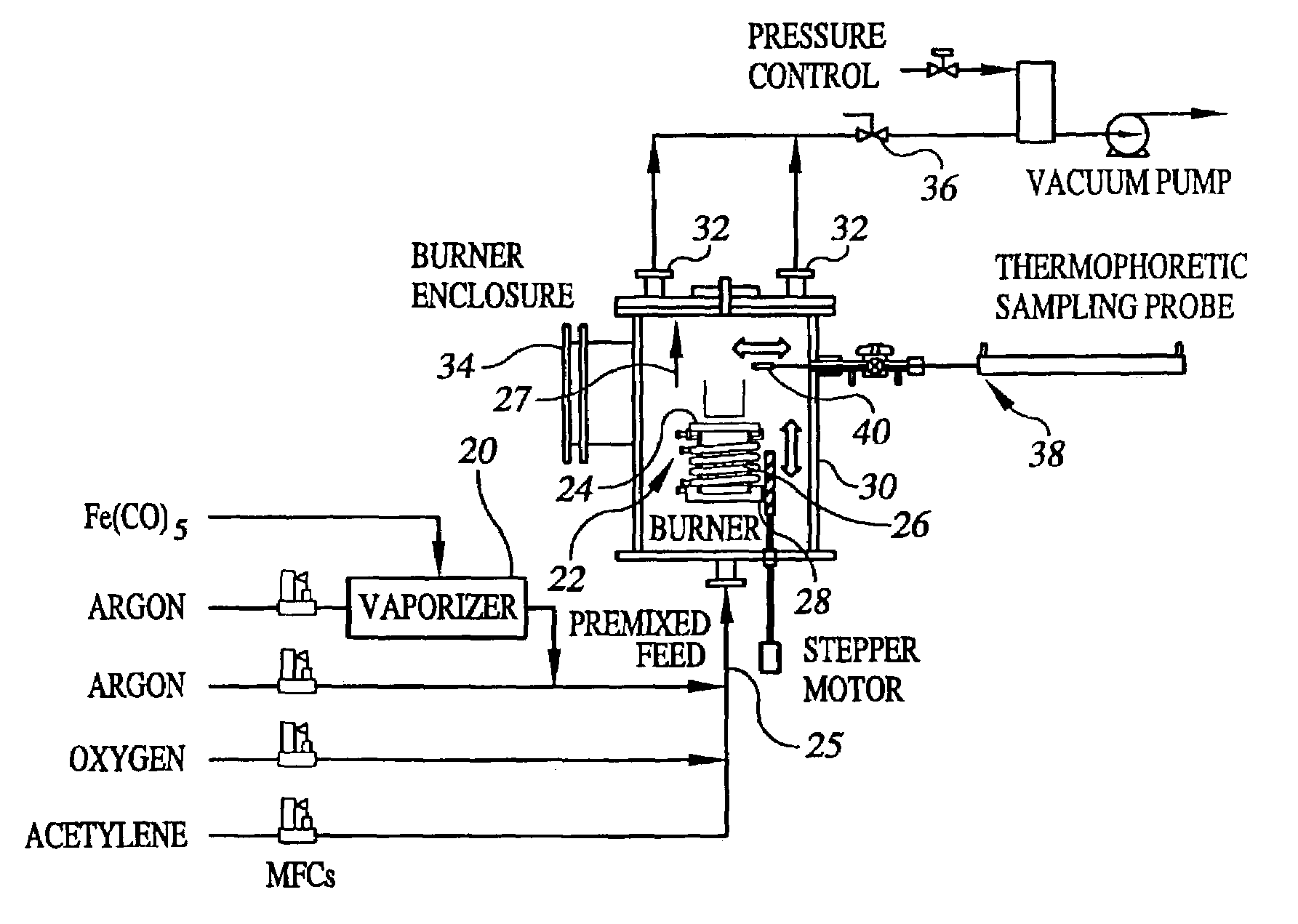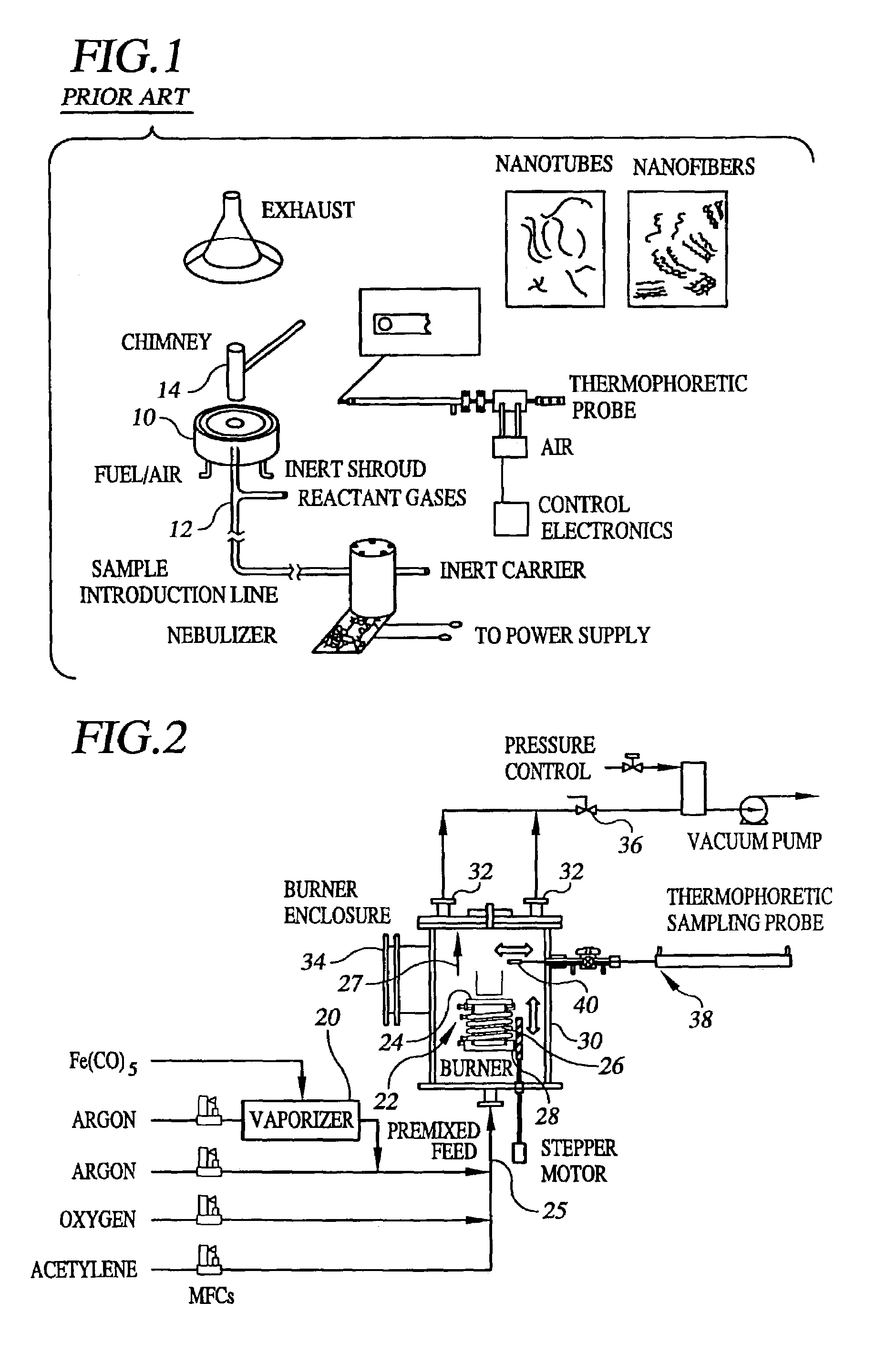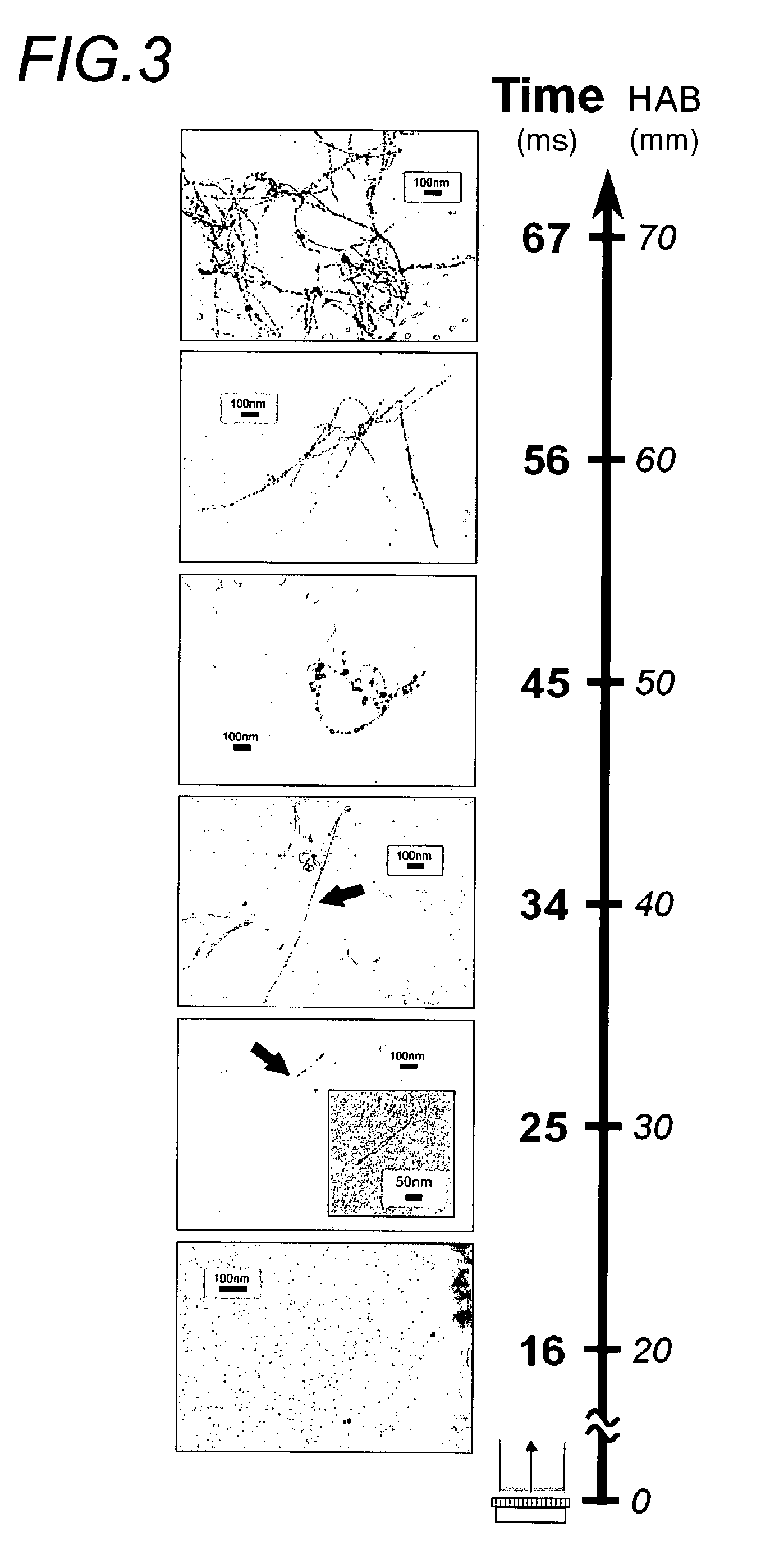Method and apparatus for synthesizing filamentary structures
a filamentary structure and filament technology, applied in the direction of carbonsing rags, chemistry apparatus and processes, fulllerenes, etc., can solve the problems of insufficient carbon in this flame system, insufficient carbon of nanotube-like materials, and difficulty in judging the extent to which nanotubes were in fact formed in the flame and how much growth occurred during extended exposure to flame. , to achieve the effect of preferential oxidation and preferential separation of structures
- Summary
- Abstract
- Description
- Claims
- Application Information
AI Technical Summary
Benefits of technology
Problems solved by technology
Method used
Image
Examples
Embodiment Construction
Definitions
[0030]The term ‘catalyst’ refers to particles introduced to the flame gases to initiate filamentary structure growth and control the nature of the formed structures.
[0031]The term ‘unsupported catalyst’ refers to catalyst particles (or precursor reagents that decompose to form components that coalesce and consequently form catalyst particles) that are introduced to the flame environment independent of any physical support affixed to a point or surface outside of the post-flame domain.
[0032]The term ‘filamentary structures’ refers to materials where there exists a dominant linear dimension, giving the structure of the material a filament-like or filamentary appearance. See also the definition of aspect ratio below.
[0033]The term ‘filamentary nanostructures’ refers to filamentary structures that have one or more dimensions on the scale of nanometers. Filamentary nanostructures include nanotubes, nanowires, nanocones, peapods, and nanofibers.
[0034]The term ‘fullerenic’ refer...
PUM
 Login to View More
Login to View More Abstract
Description
Claims
Application Information
 Login to View More
Login to View More - R&D
- Intellectual Property
- Life Sciences
- Materials
- Tech Scout
- Unparalleled Data Quality
- Higher Quality Content
- 60% Fewer Hallucinations
Browse by: Latest US Patents, China's latest patents, Technical Efficacy Thesaurus, Application Domain, Technology Topic, Popular Technical Reports.
© 2025 PatSnap. All rights reserved.Legal|Privacy policy|Modern Slavery Act Transparency Statement|Sitemap|About US| Contact US: help@patsnap.com



